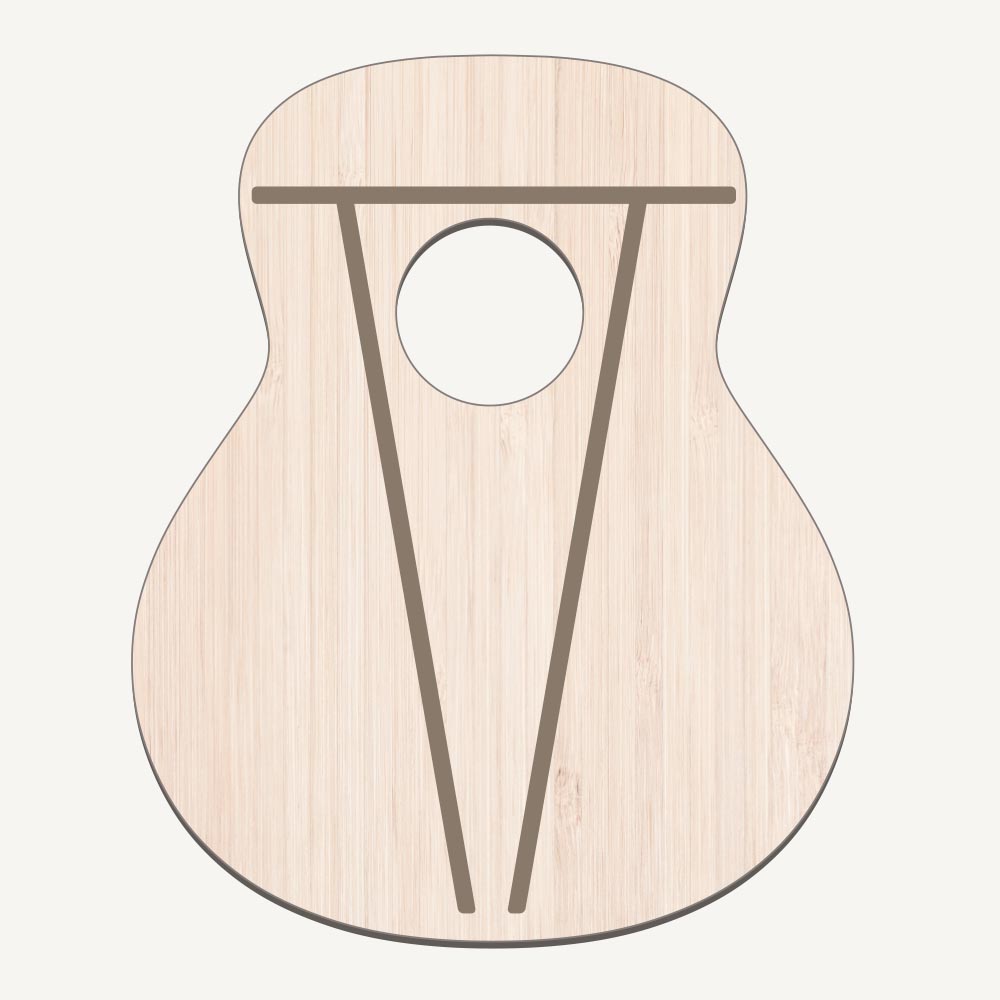Among the most popular Taylor models and one of the best-selling U.S.-made acoustic guitars on the market, the 314ce offers a quintessentially Taylor experience with all-solid tonewoods and an accommodating feel. This Grand Auditorium boasts back and sides of solid sapele paired with a Sitka spruce top, producing a punchy, shimmering midrange, along with a warm, woody low-end character to balance the vibrant treble range. The V-Class bracing scheme adds a boost to power and sustain, and the always-comfortable Taylor neck makes for a smooth feel for any playing style. With straightforward appointments to preserve its workhorse personality, ES2 electronics and a hardshell case, the 314ce is the ultimate Swiss-army-knife guitar.
Highlights
- Scale Length – 25-1/2″
- Bracing – V-Class Bracing
- Pickguard – Black
- Tuners – Taylor Nickel
- Strings – Phosphor Bronze Light
- Body Width – 16″
- Nut & Saddle – Black Graphite, Micarta saddle
- Truss Rod Cover – Black Plastic
- Number of Frets – 20
- Case – Taylor Deluxe Hardshell Brown
- Body Length – 20″
- Body Depth – 4 5/8″
Grand Auditorium
Body Length: 20″ / Body Width: 16″ / Body Depth: 4 5/8″
Taylor’s signature shape embodies the ultimate all-purpose acoustic.
- An original Bob Taylor design introduced in 1994
- Full in the lower register, present in the midrange, and sparkling on the treble strings
- Our most popular shape and a good place to begin your search
Our most popular and versatile body shape, the mid-size Grand Auditorium arrived in 1994 bearing refined proportions that fell between a Dreadnought and Grand Concert. While the bigger Dreadnought was traditionally considered a flatpicker’s guitar and the smaller Grand Concert catered to fingerstylists, the GA was designed to deliver on both fronts. The shape produced an original acoustic voice that was big enough to handle medium-strength picking and strumming, yet with impressive balance across the tonal spectrum, especially in the midrange, producing clear, well-defined notes that suited both strumming and fingerstyle playing. The GA’s overall presence tracks well with other instruments both in a studio mix and on stage, and singer-songwriters have embraced its utility both for composing and traveling with one guitar. Many people want a single guitar that can cover a variety of styles, which is why the GA continues to be our bestselling shape. If you want a great all-purpose guitar, the multi-dimensional GA won’t let you down.

Sapele
Origin: West Africa
Used On: 300 Series, Acoustic 3 Series, Laminate 100 Series, GS Mini, Baby and Big Baby
An alternative tonewood that joined the Taylor fold over a decade ago. It’s sometimes mistakenly referred to as African mahogany because it closely resembles the West African wood khaya, which is commercially known as African mahogany. Sapele is a highly sustainable, relatively fast-growing wood. Tonally, it does everything that mahogany does, with a little extra treble zing. We’ll be able to offer it for a long, long time.
Goes Well With: Everything. Like ovangkol, it’s a great all-purpose tonewood that will deliver a consistent, balanced tone in a variety of playing applications, from fingerstyle to strumming.
Sapele’s tonal output is consistent and balanced across the tonal spectrum, making it compatible with a diverse range of playing styles. It’s comparable to mahogany but its higher density tends to produce a slightly brighter sound with more top-end shimmer.

Sitka Spruce Top
The most commonly used wood for guitar tops, Sitka generates a broad dynamic range and accommodates numerous playing styles, from aggressive strumming to fingerpicking.
Origin: Northwestern North America (Coastal Rainforests of Alaska and Canada)
As a guitar soundboard, or top, Sitka spruce is the tonewood standard of the modern era. It’s used on 85-90 percent of the guitars that Taylor makes. Its combination of strength and elasticity translates into a broad dynamic range, yielding crisp articulation and allowing for everything from aggressive strumming and flatpicking to fingerpicking. Sitka spruce is Bob Taylor’s personal favorite for an all-around great guitar.
Goes Well With: All styles of guitars and players.

Expression System® 2
The Taylor Expression System® 2 (ES2) is a revolutionary pickup design that delivers the latest in Taylor’s ongoing innovation in acoustic guitar amplification. The heart of the Expression System 2 is Taylor’s patented behind-the-saddle pickup, which features three uniquely positioned and individually calibrated pickup sensors. The location of the sensors enables a more dynamic range of acoustic sound to be captured than ever before. Together with Taylor’s custom-designed “professional audio”-grade preamp, this system produces exceptional amplified tone and responsiveness. On stage through a PA, plugged into your favorite acoustic amplifier, or direct into recording software, the Expression System 2 faithfully conveys the voice of your Taylor guitar.
Behind the ES2 Design: Rethinking the Piezo Pickup
For decades, piezo-electric transducers have been positioned under the saddle of a guitar based on the long-held belief that the string and top vibration cause the saddle to “bounce” up and down. But Taylor’s electronics team, led by developer David Hosler, discovered that the vertical movement is actually heavily restricted, and that the saddle gets “locked down” due to the string tension’s downward pressure. That’s why a traditional under-saddle pickup with piezo-electric crystals often responds with a sound often characterized as thin, brittle, brash or synthetic, especially with more aggressive playing.
The saddle’s natural range of movement as the guitar is being played is actually back and forth like a pendulum. That revelation led Taylor’s design team to relocate the crystals from under the saddle to behind it. The new positioning enables the crystals to respond more naturally to the guitar’s energy as it is transferred through the saddle. Three pickup sensors are installed behind the saddle, through the bridge, with three tiny Allen screws that calibrate the position of the sensors in relation to the saddle.
Like the original Expression System, the ES2 features the same volume and tone control knobs. The preamp is similar but with a slightly different gain structure. As a result it will be about 25 percent hotter, which is more in line with other pickups. This makes it plug-and-play friendly both for artists and live sound mixers.

V-Class™ Bracing
Our patented V-Class bracing is a revolutionary new pattern — a new sonic engine — that marks a major shift away from traditional steel-string bracing patterns. By allowing the soundboard to flex naturally while maintaining rigidity along the center (in the direction of the strings), V-Class helps enhance the volume and sustain. It also creates a more orderly response from the soundboard. Up and down the fretboard, notes are full, true and consistent, with more harmonic agreement. It represents an entirely new design platform that can be adapted to different body styles in different ways to infuse each with a unique sonic personality.

Venetian Cutaway
The Venetian cutaway is known for its soft, round lines. The sloping peak of the cutaway will vary depending on the shape of the body. The Grand Concert and Grand Auditorium have a steeper slope, while the Dreadnought is a bit flatter. Our Grand Concert nylon-string models also feature a subtle, flatter slope, while our 200 Series cutaway models incorporate our flattest slope.

